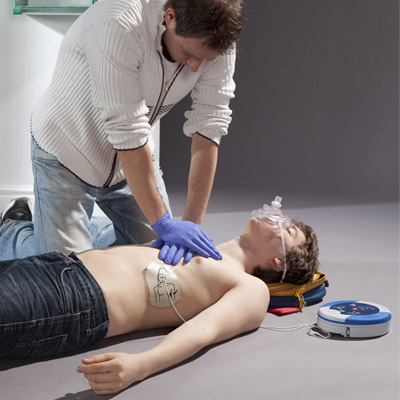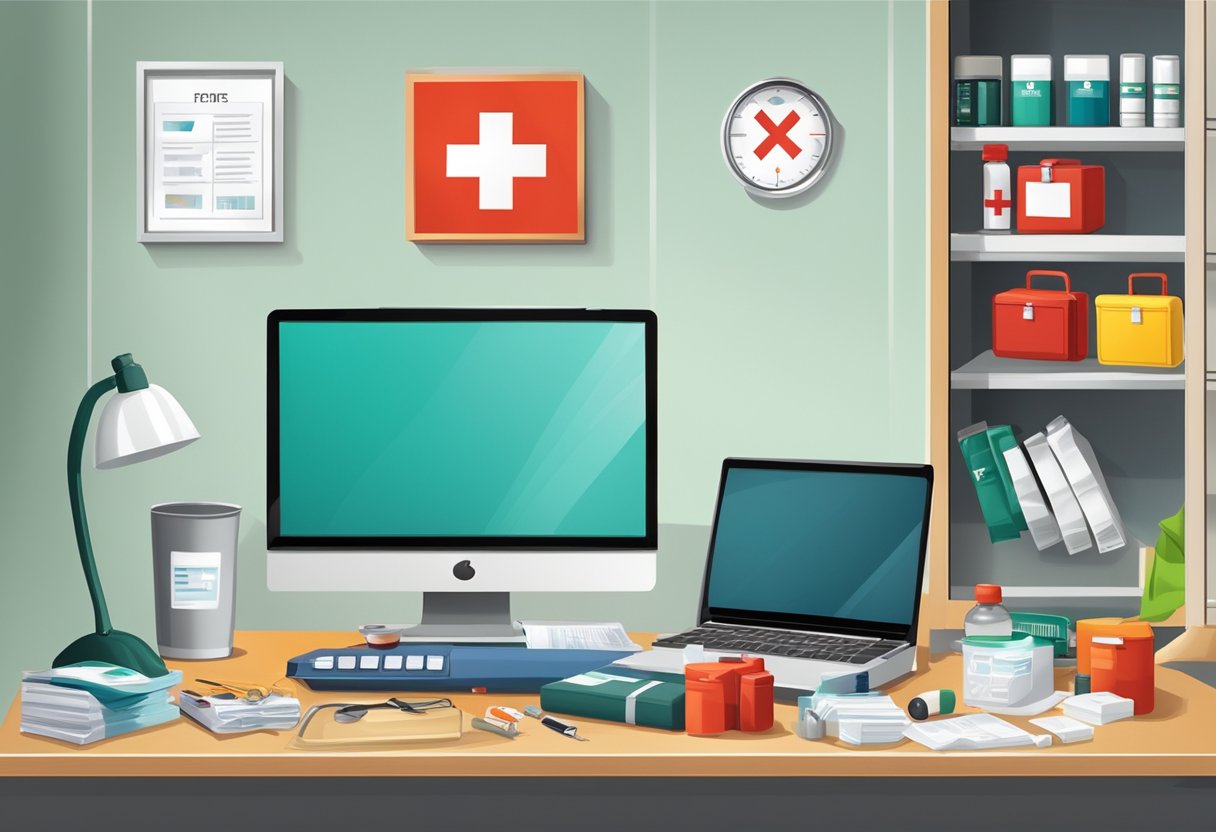
- /
- /
- /
Keeping ourselves, our families, and our colleagues and customers safe and well has never been more important. Front of our minds today is the need to ensure a hygienic and sanitised workplace and place of commerce, in the face of the impact of the CoVid-19 pandemic. But at the same time as the need for hygiene and cleanliness, we should never forget all the aspects of safety and health that impact lives every day.
And the need to have a well maintained and easy to use Automated External Defibrillator (AED) available and accessible in your workplace is about just that – it’s making your workplace safe, and keeping you, your staff, and your customers safe.
One of the biggest killers is heart disease.
As we all know, heart disease and cardiac incidents are one of the leading causes of death in Australia. This has never been more prominently visible than it is today, with the recent news coverage of the heart attack on stage at a Wiggles performance.
When we talk about heart disease, there are a number of types – they include angina, blocked arteries and heart attacks any of which could lead to a sudden cardiac arrest. A study of patients of sudden cardiac arrest found that heart attack (acute myocardial infarction) was the most common underlying mechanism of a cardiac arrest. Heart attack and heart disease knows no gender bias, being the primary cause of death for men and women alike.
Whilst age does factor in, with those below the age of 25 less at risk, by the time you turn 45, it is the number one cause of death. But even turning 25 significantly increases your risk of heart disease. This is also the age when people start to work and the participation of people in the workforce peaks. It is almost a given that a person of this age group would be employed and working in some form or the other and contributing.
Now, work in and of itself isn’t the cause. But, what are some of the things you as a business owner should be looking out for to protect your employees both young and older, to mitigate the risks of heart disease, and to have a safe, protected, and fit workforce?
In this article we look at some of these factors and try and understand how they are ultimately related to a sudden cardiac arrest.
Toxins at the Workplace
Several chemicals are considered to be a direct cause of heart attacks. There are many benefits to a professional cleaning service, for instance, that uses safe chemical free cleaning, and manages the use and disposal of chemicals and materials for you. Want to find out more? Check out our range of clean and safe solutions here.
Just a couple of the examples of chemicals include:
- Carbon disulphide is a gas found mainly in industrial plants producing rayon, cellophane, etc. Studies have shown that people working in these plants have a significantly higher mortality rate due to heart related conditions.
- Carbon monoxide, which is found in the exhaust of vehicles, is another toxin which causes higher rates of mortality amongst people engaged in jobs related to roads, tunnels etc. where exposure to motor exhaust is high.
Environmental Tobacco Smoke
Passive smoking is another known and proven contributing factor to heart disease, amongst other serious and potentially fatal health impacts. Breathing other people’s cigarette smoke enhances your chances of lung cancer as well as heart disease. Ensuring distance from smoking areas, and ventilation of any areas, are just a couple of the things that you should look to do to minimise the impact of passive smoking on your place of work.
Shift Work
Working in shifts, particularly in the night shift, often results in lack of sleep. The body requires a certain minimum amount of sleep in order to rejuvenate itself and work properly the next day. Failure to get the required amount of sleep can result in tiredness, difficulty to concentrate which may result in errors or accidents and ultimately build up of stress, with the concomitant negative impact on chemical production in the brain and body.
Moreover, the body’s own circadian clock gets disturbed, affecting the performance of the heart and generally placing a higher level of stress and pressure on your body’s systems. Other factors such as changes in behaviour and social patterns may also cause a person working in shifts to be at greater risk of a sudden cardiac arrest. For many companies and industries, shift work is a norm – so having equipment like an accessible and easy to use AED on site, within easy range, is just good common sense for any company operating in shifts.
Stress
Stress at work has risen over the last few years. A survey done by Princeton Survey Research Associates found that 3 out of every 4 workers believe that stress in work now is more than what it was a generation ago.
The CDC defines stress as the harmful physical and emotional responses that occur when the requirements of the job do not match the capabilities, resources, or needs of the worker. Job stress can lead to poor health and even injury. Stress at work is caused by many job conditions which the individual worker is unable to cope or deal with adequately. Job conditions that may lead to stress include too much work, leadership or management behaviour, insecurity around role. But, perhaps most relevantly and immediately contributing to the growth and increase in stress, are any environmental concerns such as excessive heat, noise, or sitting in poor spaces or positions.
Stress, particularly constant stress, is a known risk of cardiovascular disease. Stress causes the body to release hormones in order to activate its survival mechanisms. Blood pressure is raised and there are changes in the way the blood clots in the human body, both of which increase the likelihood of heart attacks.
Finally, as we all know, our response to stress is often not optimal. Instead of placing greater emphasis on health, fitness, nutrition, we often turn to smoking, drinking alcohol, overeating or not exercising, which will only exacerbate the situation and increase the impact on our system of the stress we are experiencing.
Workplace Lunches
For many of us, our lunch at work is less than ideal! In addition to bad habits formed around eating at desks, in a rush, with the relevant impacts on stress and our bodies that have been articulated above, our choices for food can be disastrous for our overall health. This includes our choices such as:
- Large portion sizes.
- High levels of sodium, sugar and fat.
- Use of high fat meats such as bacon, pepperoni, meatballs rather than low fat ones like ham, chicken, turkey.
- Choice of cooking techniques – Larger quantities of food more often tend to be made in plenty of oil (breaded, buttered, tempura, fried, etc.) rather than being being baked, barbecued, broiled, grilled, poached, roasted or steamed.
- The use of heavy cream or cheese based sauces such as mayonnaise, hollandaise, Alfredo etc.
- The easy availability of high sugar content drinks like fizzy soft drinks, fruit flavoured carbonated beverages or even milkshakes rather than fresh fruit juices.
- Lack of availability of fresh fruits and vegetables to snack upon when hunger strikes, such as baby carrots, apples, yoghurt, nuts.
All these factors combined have caused heart related diseases to become the number one cause of death in Australia.
Given the dire implications, workplaces and employers need to work towards developing healthy workplaces and healthy practices – providing their staff with guidance beyond hygiene and safety, and reducing the dependency on emergency assistance provided by AEDs. Some of the things that as an employer you can consider include:
- Provide healthy foods and beverages at workplaces, including in lunchrooms, cafes and vending machines.
- Providing access to exercise facilities at subsidised rates either onsite or close to the office.
- Encourage employees to use stairs often.
- Provide free or subsidised health checkups regularly, including checking for cholesterol screening.
- Offer access to a recognised training course on first aid which includes cardio pulmonary resuscitation (CPR).
- Last, but certainly not the least, easy access to AEDs at workplaces since people spend 40 hours a week at their workplace.
Join the healthy heart movement today. Make your workplace heart friendly with these simple tips.
Ensure that you always have a fully functional defibrillator that can be easily accessed whenever required. The Heartsine 500P AED from Alsco is more than just a defibrillator. It is easy to use, gives assists during the CPR process via vocal prompts and helps saves lives at a convenient low monthly cost. To know more about the advantages of the Heartsine 500P, simply give our friendly experts a call.






